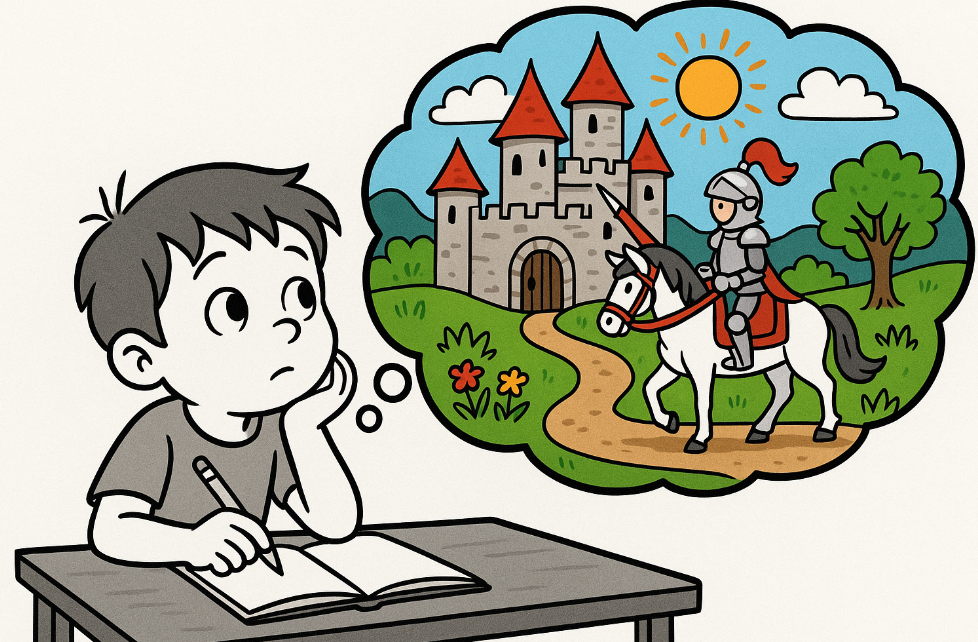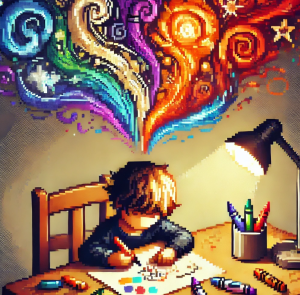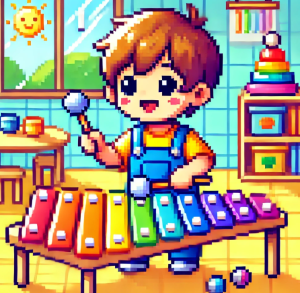
Unlocking Kids’ Hidden Superpower
Did you know that most children’s natural creativity drops sharply by the time they reach middle school? Researchers call it the “creativity cliff,” and it’s not just about losing art skills—it’s about losing a core part of what makes kids resilient, confident, and mentally healthy.
When kids stop believing they can be creative, it doesn’t just affect their drawings or science projects. It erodes their self-confidence, emotional regulation, and ability to problem-solve. In other words, creativity isn’t extra. It’s essential.
What Science Calls “Creative Flourishing”
A new wave of psychological research has introduced us to a powerful concept: Creative Flourishing. Think of it as the sweet spot where three forces meet:
- Creative Agency: Kids believe they can take action and make a difference with their ideas.
- Creative Self-Efficacy: They trust their ability to actually be creative.
- Flow Proneness: They can lose themselves in a project, feeling energized and joyful instead of bored or anxious.
When these three overlap, kids don’t just do creative things—they thrive. They show stronger resilience, deeper focus, and healthier self-esteem.
Why This Matters in Schools
Here’s the kicker: research shows that creativity is not just an “art thing.” It’s deeply tied to mental health. Children with stronger creative self-beliefs are better equipped to handle stress, bounce back from setbacks, and find meaning in tough times.
Think about it. A child who believes, “I can figure this out” is less likely to spiral into anxiety when faced with a challenge. A student who experiences flow—losing themselves in reading, coding, music, or even soccer—walks away calmer, prouder, and more focused. Creativity is like emotional armor.
The Classroom Experiment That Changed Minds
One study of creative education found that when teachers built safe, supportive environments where kids could try new things without fear, students not only produced more creative work, but also showed increased engagement and motivation. They also reported feeling happier, more confident, and more connected to classmates
That sense of safety—where mistakes are learning opportunities instead of failures—is the soil where creative flourishing grows.
Why Kids Lose Creative Confidence
If creativity is so powerful, why do we see the “creativity cliff”? The research points to a few culprits:
- Standardized testing culture: When there’s only one “right” answer, kids stop experimenting.
- Unequal access: Some students lack access to essential materials, mentors, or encouragement.
- Social pressure: By middle school, many kids fear being judged or standing out.
This isn’t just sad—it’s dangerous. A lack of creative confidence is tied to lower self-esteem and fewer coping skills when life gets messy.
Turning Science Into Action
So what can parents, teachers, and school leaders do? The research on creative flourishing offers clear starting points:
- Nurture agency: Let kids make choices in projects—topic, medium, or approach. Ownership builds confidence.
- Boost self-efficacy: Celebrate effort, not just outcomes. Remind students, “You can do hard things.”
- Make flow possible: Build blocks of uninterrupted time for deep focus. Flow rarely happens in five-minute bursts.
- Create safety nets: Normalize mistakes. Tell kids, “This classroom is a lab—we experiment, we learn.”
Why It’s Bigger Than Art Class
Here’s the mind-blowing part: when kids flourish creatively, the benefits spill over into math, reading, relationships, and even mental health. Creativity trains the brain to handle uncertainty—arguably the single most important life skill.
And in today’s world of rapid change, climate anxiety, and mental health challenges, what could be more urgent than helping kids believe they can create new possibilities?
The Takeaway
Creative flourishing isn’t a luxury. It’s a mental health necessity. When kids are empowered to create, believe in their abilities, and experience flow, they don’t just make art—they build resilience, confidence, and joy.
So the next time your child builds a cardboard spaceship, writes a wild story, or experiments with a new recipe, remember: they’re not just “playing.” They’re practicing the very skills that will protect their mental health for years to come.
Let’s Talk About It
- What’s the biggest mental health challenge you see in schools today?
- How can schools better support students’ emotional well-being through creativity?
- What’s one creative activity that changed the way you parent, teach, or counsel kids?
Drop your thoughts in the comments—and share this with a teacher or parent who cares about raising resilient, thriving kids.



